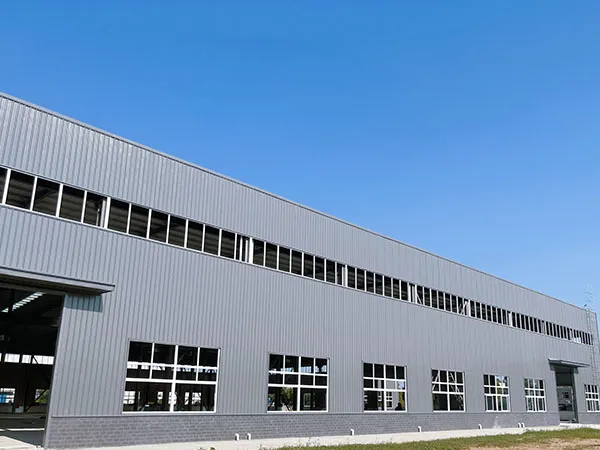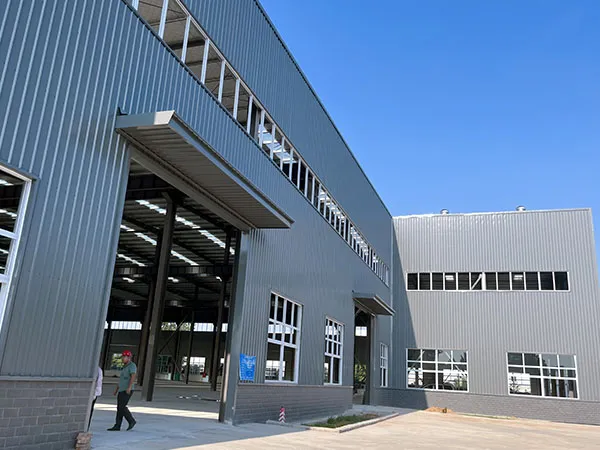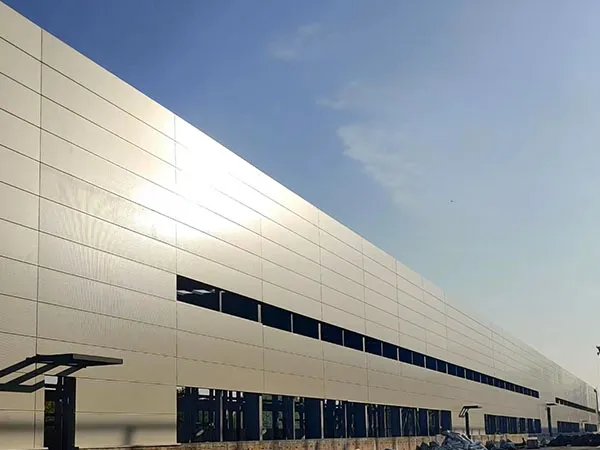Time:2025-01-23 13:15:36 Source:Sanjian Meichen Steel Structure
Structural steel is composed of various components that work together to form a complete and functional structure. These components can be broadly categorized based on their roles in the overall structure.

These are the main load-bearing components of the structure.
a. Columns
Function: Columns are vertical members that support the weight of the structure and transfer loads to the foundation.
Types:
Hollow Sections (Circular or Rectangular): Used for their high strength-to-weight ratio and aesthetic appeal.
I-Beams: Often used as columns in buildings due to their high load-carrying capacity.
Box Columns: Made from rectangular hollow sections, used for aesthetic and structural purposes.
Built-up Columns: Composed of multiple steel plates or profiles, used for very heavy loads.
b. Beams
Function: Beams are horizontal members that span between columns or supports and carry loads from floors, roofs, or other elements.
Types:
I-Beams (Universal Beams): Commonly used due to their high moment of inertia and load-carrying capacity.
H-Beams: Similar to I-beams but with wider flanges, providing better load distribution.
Box Beams: Made from rectangular hollow sections, used for aesthetic and structural purposes.
Channel Beams: Used for secondary beams or as part of composite structures.
Plate Girders: Deep beams made from steel plates, used for long spans and heavy loads.
These components support the primary elements and help distribute loads more evenly.
a. Bracing
Function: Bracing provides lateral support and stability to the structure, resisting wind, seismic, and other lateral forces.
Types:
Diagonal Bracing: Used in braced frames, can be concentric (aligned with the center) or eccentric (offset).
Cross Bracing: X-shaped bracing used in trusses and frames.
Knee Bracing: Short diagonal braces connecting beams to columns, providing additional support.
b. Purlins and Girts
Function: Purlins are horizontal members in roof structures that support roof cladding and transfer loads to main beams. Girts are similar but used in walls to support wall cladding.
Types:
Zed Sections: Commonly used for purlins and girts due to their shape and load-carrying capacity.
C-Sections: Also used for purlins and girts, especially in light steel framing.
Connections are critical for transferring loads between structural elements and ensuring the integrity of the structure.
a. Bolted Connections
Function: Bolts are used to connect steel members together. They provide a strong, reliable connection that can be easily assembled and disassembled.
Types:
High-Strength Friction Grip Bolts: Used for critical connections where high strength and reliability are required.
Bearing Bolts: Used for connections where the load is transferred through bearing rather than friction.
b. Welded Connections
Function: Welding permanently joins steel members together, providing a strong and continuous connection.
Types:
Butt Welds: Used to join two members end-to-end.
Fillet Welds: Used to connect members at an angle, such as beams to columns.
c. Riveted Connections
Function: Rivets were traditionally used to connect steel members but have largely been replaced by bolts and welding in modern construction.
Types:
Solid Rivets: Used for their durability and reliability in older structures.

These components provide additional support and stability to the structure.
a. Base Plates
Function: Base plates are steel plates that connect columns to the foundation. They distribute the load from the column to the foundation.
Types:
Bolted Base Plates: Connected to the foundation using anchor bolts.
Welded Base Plates: Used for heavier loads where a stronger connection is required.
b. Diaphragms
Function: Diaphragms (such as floor slabs or roof decks) act as rigid elements that transfer lateral loads to the vertical members of the structure.
Types:
Composite Diaphragms: Made of steel and concrete, used in floors and roofs.
Steel Deck Diaphragms: Made of steel decking, used in lightweight roof structures.

These are additional elements that enhance the functionality and performance of the structure.
a. Stiffeners
Function: Stiffeners are small steel plates or sections used to prevent local buckling in beams and columns.
Types:
Transverse Stiffeners: Used in beams to prevent web buckling.
Longitudinal Stiffeners: Used in columns to prevent buckling.
b. Cleats and Gusset Plates
Function: Cleats are small steel angles used to connect members at an angle. Gusset plates are large steel plates used to connect multiple members in trusses and frames.
Types:
Angle Cleats: Used for connecting beams to columns.
Triangular Gusset Plates: Used in trusses for connecting chords and web members.
c. Hangers and Supports
Function: Hangers and supports are used to suspend or support secondary elements like pipes, ducts, and electrical conduits.
Types:
Rod Hangers: Used for light loads.
Channel Supports: Used for heavier loads.
Summary
Structural steel consists of primary load-bearing elements (columns and beams), secondary elements (bracing, purlins, girts), connections (bolts, welds, rivets), supporting elements (base plates, diaphragms), and miscellaneous components (stiffeners, cleats, hangers). Each part plays a crucial role in ensuring the strength, stability, and functionality of the overall structure.